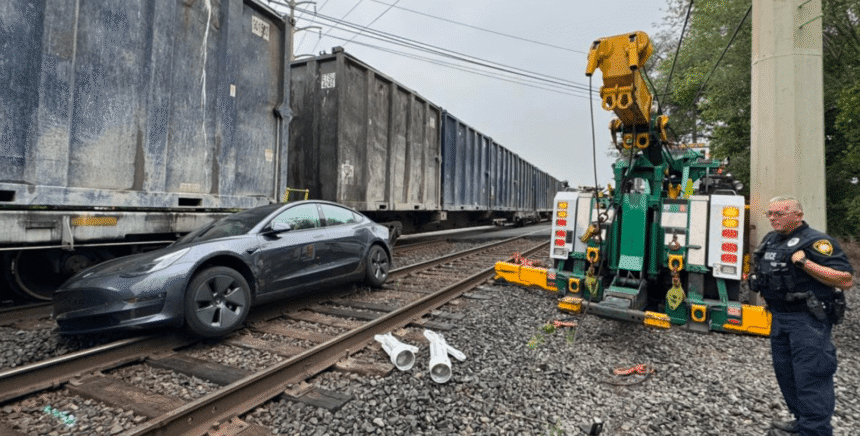The incident involving a Tesla Model 3 getting stuck on a train track and being hit by a train in Sinking Spring, PA, has raised concerns about the use of self-driving technology in vehicles. The driver claimed that the car was in “self-driving mode” at the time of the accident, leading to speculation about the role of autonomous features in the incident.
According to reports from the fire alerts in Berks County, the Tesla Model 3 drove around a train track barrier near South Hull Street and Columbia Avenue, ultimately getting stuck on the tracks. Despite the driver being able to exit the vehicle safely, the train still collided with the car, resulting in the side mirror being snapped off.
Emergency services were called to the scene, and the fire commissioner ordered all train traffic to be stopped while the Model 3 was removed from the tracks using a crane. Spitlers Garage & Towing was tasked with the recovery operation and shared images of the process on social media.
The driver of the Tesla claimed that the vehicle was in “self-driving mode,” raising questions about the capabilities and limitations of Tesla’s Full Self-Driving (FSD) features. Tesla has been selling a FSD package for an additional cost, promising unsupervised self-driving capabilities with software updates. However, drivers are still required to supervise the vehicle and remain responsible for its operation at all times.
While instances of reckless behavior by Tesla drivers attributing it to FSD features have been reported in the past, it is essential to gather more data to understand the circumstances of this particular incident. It is possible that the FSD system attempted to navigate around construction barriers, leading to the car getting stuck on the train tracks.
In conclusion, incidents like these highlight the importance of responsible use of autonomous driving technology and the need for drivers to remain vigilant and in control of their vehicles at all times. As the development of self-driving technology continues, it is crucial for both manufacturers and drivers to prioritize safety and adherence to regulations to prevent accidents and ensure the safe operation of autonomous vehicles.







